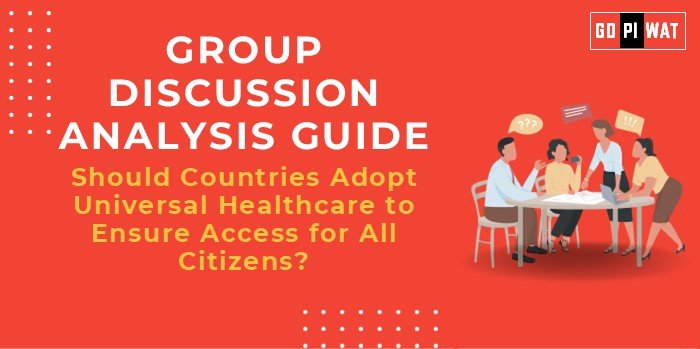🏥 Should Countries Adopt Universal Healthcare to Ensure Access for All Citizens?
🌍 Introduction to Universal Healthcare
Opening Context: “Universal healthcare is a cornerstone of equitable societies, aimed at ensuring no one faces financial hardship for essential health services. For countries aiming to improve well-being, the debate over its adoption remains pivotal.”
Topic Background: Universal healthcare refers to a system where health services are accessible to all citizens without direct financial burden at the point of care. Countries like the UK and Canada have successfully implemented such systems, yet the feasibility and implications remain debated globally.
📊 Quick Facts and Key Statistics
- 🌐 Global Access: Over 50 countries have universal healthcare systems.
- 💰 US Spending: Healthcare accounts for nearly 17% of GDP, with millions uninsured.
- 🌍 WHO Estimate: Around 400 million people globally lack access to essential health services.
- 🇮🇳 India’s Public Health Spending: Merely 1.28% of GDP, below the global average.
- 📈 Life Expectancy: Higher by 5-10 years on average in universal healthcare countries.
👥 Stakeholders and Their Roles
- Governments: Policy formulation and funding allocation.
- Healthcare Providers: Deliver equitable services while managing costs.
- Citizens: Advocate for affordable care; often influence system design through elections.
- International Organizations: Offer guidance and financial support for developing systems.
✔️ Achievements and Challenges
Achievements
- 📉 Better Health Outcomes: Countries like Norway and Australia achieve lower mortality rates and higher life expectancy.
- 📈 Economic Benefits: Universal healthcare reduces absenteeism and boosts productivity.
- 💵 Cost Savings: Reduced administrative overhead compared to private insurance systems.
Challenges
- 💸 Funding: High taxes required for sustainability.
- ⏳ Quality of Care: Potential for long wait times and resource limitations.
- ⚙️ Implementation: Political resistance and infrastructural gaps, especially in developing nations.
🌍 Global Comparisons
- 🇬🇧 Success Story: UK’s NHS offers comprehensive services funded by taxation, ensuring inclusivity.
- 🇺🇸 Challenges Faced: US struggles with insurance disparities, despite high expenditure.
📚 Case Studies
- 🇨🇦 Canada: Delivers affordable care but faces criticism over long wait times for elective procedures.
- 🇨🇺 Cuba: High doctor-patient ratio demonstrates effective resource utilization despite economic constraints.
📖 Structured Arguments for Discussion
- Supporting Stance: “Universal healthcare ensures equity and improves overall societal health.”
- Opposing Stance: “Its implementation strains government budgets and may lead to inefficiencies.”
- Balanced Perspective: “While universal healthcare promotes equity, it requires sustainable financial models and gradual rollouts.”
💡 Effective Discussion Approaches
- Opening Approaches:
- 📊 Statistical Impact: “400 million people globally lack access to essential services, underscoring the urgent need for universal systems.”
- 📖 Case Study Mention: “Canada’s healthcare system highlights the trade-off between affordability and wait times.”
- Counter-Argument Handling:
- Example: “While critics cite high costs, studies show that universal healthcare can reduce overall national spending by streamlining administration.”
🔍 Strategic Analysis of Strengths and Weaknesses
- Strengths: Reduces financial barriers to care, promotes preventive healthcare.
- Weaknesses: High initial investment, risk of overburdened systems.
- Opportunities: Technological advancements like telemedicine, global partnerships for funding and training.
- Threats: Political resistance, economic downturns impacting funding.
🎓 Connecting with B-School Applications
- Real-World Applications: Analyzing healthcare as a case study in economics, governance, and operations.
- Sample Questions:
- “How would universal healthcare impact a nation’s economy?”
- “What are the challenges of implementing it in developing countries?”
- Insights: Future managers can explore frameworks for sustainable policy-making and evaluate public-private partnership models.


